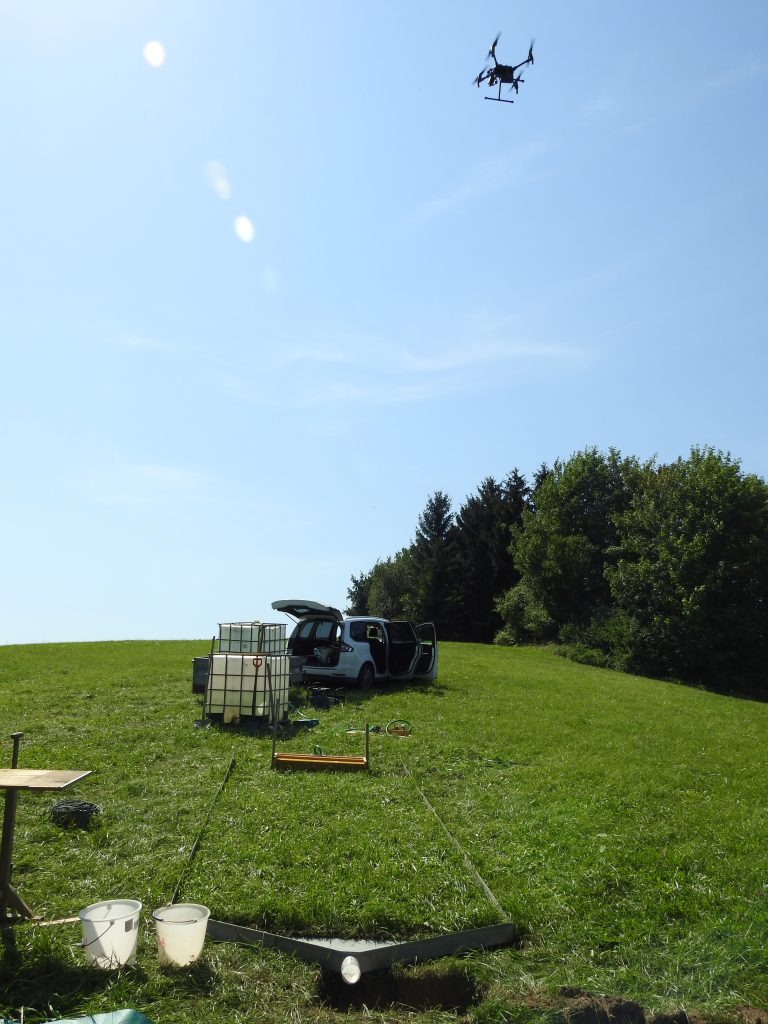Working package 2 consists of two columns: soil core sampling of vegetated filter strips (VFS) and an experimental approach. For the latter, we conducted artificial runoff experiments using grassland plots (2 x 5 m) that were subjected to artificial runoff. The water was applied through an overflow tank and was spiked with bromide, to be able to distinguish it from autochthonous water in the soil, as well as phosphate, to mimic nutrient enriched agricultural runoff. Our main interest was on how concentrated runoff (i.e., due to flow convergence in the field or at the field edge) affects flow characteristics and VFS performance. To this end, we used three different widths of the overflow tank and analysed total water budget and flow velocities, as well as bromide and phosphate concentrations at the end of the plots.
The outdoor experiments are completed, currently the data is processed and analysed. We expect that flow concentrations have a significant effect on runoff characteristics, e.g., less infiltration and, in turn, a higher amount of runoff water, accompanied by higher flow velocities and less time for soil/water interaction processes. All these aspects would have direct consequences for VFS performance. However, flow concentration is rarely accounted for in VFS design guidelines and recommendations.



